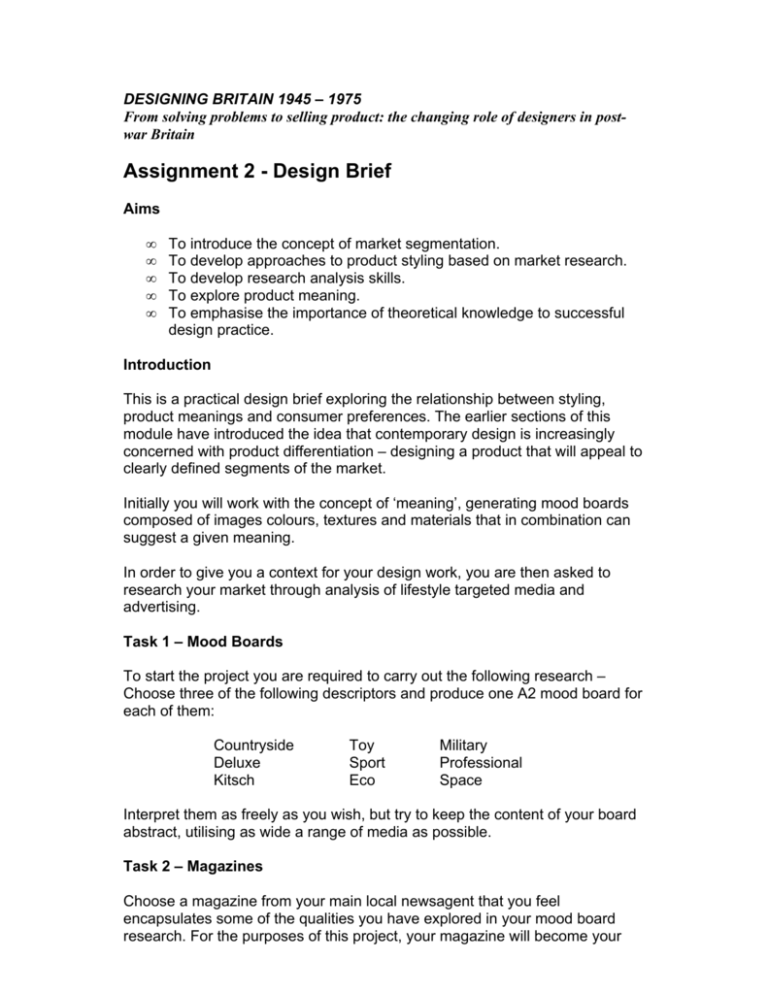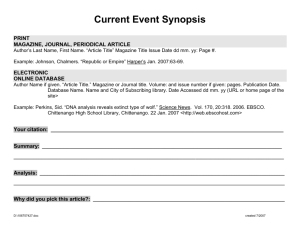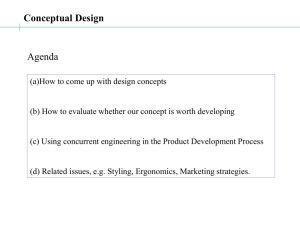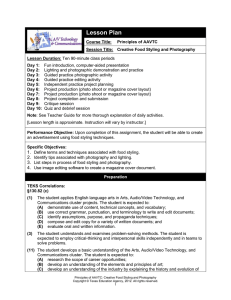Assignment 2 - Design Brief
advertisement

DESIGNING BRITAIN 1945 – 1975 From solving problems to selling product: the changing role of designers in postwar Britain Assignment 2 - Design Brief Aims • • • • • To introduce the concept of market segmentation. To develop approaches to product styling based on market research. To develop research analysis skills. To explore product meaning. To emphasise the importance of theoretical knowledge to successful design practice. Introduction This is a practical design brief exploring the relationship between styling, product meanings and consumer preferences. The earlier sections of this module have introduced the idea that contemporary design is increasingly concerned with product differentiation – designing a product that will appeal to clearly defined segments of the market. Initially you will work with the concept of ‘meaning’, generating mood boards composed of images colours, textures and materials that in combination can suggest a given meaning. In order to give you a context for your design work, you are then asked to research your market through analysis of lifestyle targeted media and advertising. Task 1 – Mood Boards To start the project you are required to carry out the following research – Choose three of the following descriptors and produce one A2 mood board for each of them: Countryside Deluxe Kitsch Toy Sport Eco Military Professional Space Interpret them as freely as you wish, but try to keep the content of your board abstract, utilising as wide a range of media as possible. Task 2 – Magazines Choose a magazine from your main local newsagent that you feel encapsulates some of the qualities you have explored in your mood board research. For the purposes of this project, your magazine will become your ‘focus group’. Through an analysis of its content you should attempt to define its target readership. Look for qualities communicated by graphic styles, types of advertising, content of editorial articles, cover imagery, fonts and headlines, etc. Communicate your analysis by using at least three A2 boards containing cuttings and extracts from the magazine together with your own notes and comments about the content. At the end of this part of the project you should have accumulated a collection of abstract imagery that is able to connote specific product attributes (your mood boards), and an analysis of the preferences of a segmented market group (the readership of your magazine). Task 3 – Product Design Using the raw material you have gathered you should design a product aimed at the readership of your chosen magazine – the kind of product that might well be advertised or featured within that publication. You should choose one of the following product types: • • • • • Hair Drier Toaster Shaver Food Mixer Clothes iron The emphasis of this project is on the styling of the product. You are not required to rethink the fundamental concepts behind these object types. Your product must be aimed at the readership of the magazine you have chosen. Using your findings from the analysis exercise consider the tastes and preferences of your market and design your product accordingly. You may find it helpful to source a number of existing product types not included in the list above that you feel would appeal to your chosen market group. These are sometimes known as ‘parallel products’. Experiment freely with the use of different materials, colours, textures and forms in your own design – you can substantially alter the connotations of your product by making simple changes to these details. Focus on the meanings that the forms you design may communicate to the purchaser and user. Submission requirements You are required to submit the following for your final assessment: • • • • • • • Your three mood boards. Your analysis of the magazine you have been given. Market research showing how styling has been applied to a number of existing products aimed at your target group. A written statement outlining the qualities you wish to associate with your product, and how this targets your market. Sketch development sheets showing a wide range of design ideas and demonstrating an exploratory design approach. A final colour visual clearly showing the characteristics of your design. A three-dimensional sketch model of your product, built full-size. Assessment Criteria Creativity and Originality: • The ability to select and employ effective strategies to generate individual, innovative and imaginative ideas in response to a set brief. Critical Faculties • Ability to analyse information and situations, to formulate independent judgements, and to articulate reasoned arguments in the review and evaluation of your own work. Information Skills • Competence in handling information including information sources, evaluation criteria, navigation methods, manipulation techniques and presentation issues. Communication, Presentation Skills and Literacy: • Ability to convey ideas and information comprehensibly in visual, oral and written forms. Technical Knowledge and Skills: • Proficiency and competence in the use of a range of materials, techniques, methods, including computing and digital media.









